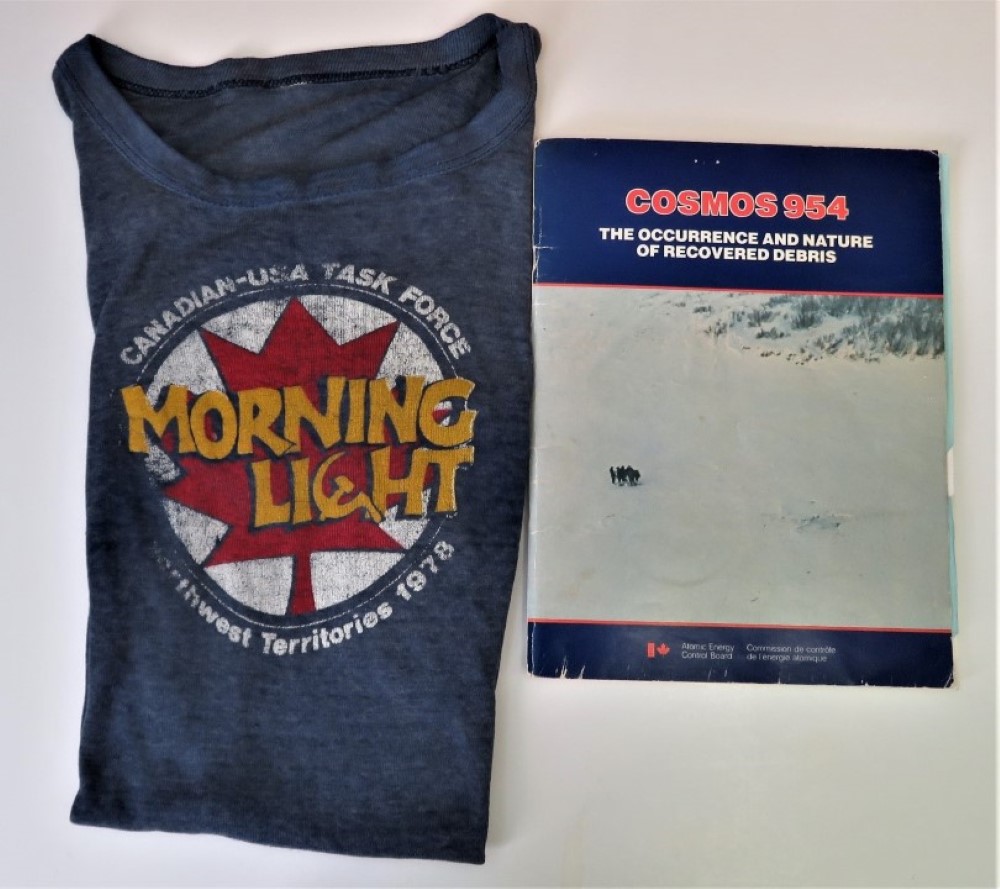
On 19 January 1978 the US government advised the world that its space monitoring group had determined that the Russian satellite, Cosmos 954, which contained a nuclear reactor, was likely to re-enter the atmosphere in an uncontrolled manner, possibly within days. The satellite had been launched by the Russians only five months earlier but there had been problems with the launch and the satellite did not reach its planned orbit. The exact date and area over which the re-entry would occur were uncertain.
The fiery eastward re-entry of the satellite started just five days later at 6:53 (EST) on 24 January 1978 over the Queen Charlotte Islands, just off the coast of British Columbia. Glowing fragments were seen by eyewitnesses as far inland in northern Canada as Great Slave Lake. A huge recovery effort, named Operation Morning Light (OML), was launched immediately to locate, recover and evaluate what was expected to be a significant amount of highly-radioactive material spread over a very large area. OMG was led by the Department of National Defence (DND) and assisted by a wide range of Canadian and American agencies.
The Atomic Energy Control Board (AECB), which played a major role in OPL, requested assistance from two AECL sites, Whiteshell and Chalk River. The Whiteshell Laboratories became the lead agency in analyzing the recovered material while Bill Taylor of the Chalk River Laboratories, who had an international reputation for expertise in the packaging and transportation aspects of radioactive materials, was requisitioned to oversee the safe packaging of materials which were then shipped by military aircraft to Whiteshell for analysis. Bill’s main base was Canadian Forces Base Namoa near Edmonton, but he also made visits to Yellowknife and Cosmos Lake, near some of the material-impact sites.
The lengthy recovery effort, which spanned over 100,000 square kilometers of remote territory under sometimes very difficult weather conditions, extended for almost a year. In total about 65 kg of material was recovered. Pieces varied in size from an 18 kg piece to microscopic flakes. One of the smaller flakes, only about 2 mm in diameter, exhibited radiation fields of 500 R/h on contact. Estimates based on the analysis of the materials recovered and reactor-physics calculations suggested that the satellite, when first reaching orbit, weighed approximately 4000 kg and that the reactor had a thermal output power of 100 kW or less.
Participants in OML were later sent a tee-shirt marking the event. Recently Bill Taylor with a bit of gentle prodding from his wife Kathy, donated his well-used, proudly-worn tee-shirt to the Society for the Preservation of Canada’s Nuclear Heritage Inc. (SPCNHI) along with his trip report and an excellent summary report published by the AECB and sent to OML participants.
Anyone interested in further details of the effort at Whiteshell can find them in the excellent Whiteshell history available at http://online.fliphtml5.com/xzbq/krra/ . A popular book, Voyage into the Unknown, by C.A. Morrison (1983), also describes OML in some detail.
Over the years AECL personnel have been involved with many international efforts ranging from the analysis of air samples after events such as atomic bomb tests or reactor accidents to the location of contaminated or lost radioactive sources and the safe transport of radioactive materials. SPCHNI would be very pleased to receive any artifacts, documents and stories related to these events. Please send your contact information to info@nuclearheritage.ca or any member of the SPCNHI.
